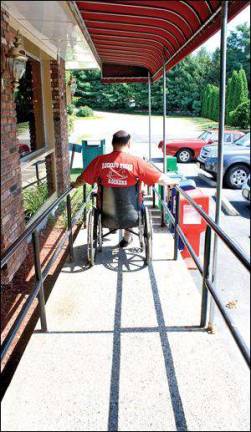Local validation of national volunteering trend

Warwick - More citizens are volunteering in the United States today than in the last 30 years, many of which are youth volunteering through school programs. According to the United States Corporation for National and Community Service, or CNS, 38 percent of students ages 12 to 18 have participated in at least one volunteering opportunity. Anne Pennington, a 15 year who attends Warwick Valley High School, is caught up in the movement. “When I’m in Warwick we mention AIDS and homelessness,” said. “But we always talk about it as if it’s a really far away, distant issue. When you see their experience you get a whole new perspective.” Last summer Pennington spent three weeks volunteering in the urban area of Baltimore and helped paint the Mayflower II at Plimoth Plantation in Plymouth, Mass. She just came back from Shefield, Mass., where she and 12 other students helped with chores at the Farmers’ Museum in Cooperstown. “I think she’s always been pretty civic minded,” said Anne’s mother, Tracey Pennington. She credits Partners in Education, with invigorating Anne with social responsibility which led to her volunteering. Dr. Marijane Reinhard, assistant superintendent for curriculum and instructional services, said PIE is a program some parents opt over traditional classrooms where students work together, make independent choices and take responsibility for outcomes. High school graduates of PIE and parents spend time volunteering in the PIE classrooms. Warwick is not alone in integrating volunteerism into their curriculum. According to CNS 68 percent of volunteering youth pitched in because of a class requirement. Though youth may not be volunteering to volunteer it may not matter. CNS statistics show students who volunteered through a school based program more than a year ago are 11 percent more likely to have volunteered again during the past year. Volunteers are also more likely than non-volunteering counterparts to be interested in world affairs and feel capable of assuaging local problems. Anne feels empowered. Newly back from her volunteering excursion in Massachusetts she is brimming with ideas for her community. “What interests me the most is trying to start an urban-rural exchange program,” said Anne. The cultural flop she enthusiastically described would educate youth in urban areas about issues such as farmland and the environment and expose youth in rural areas to the poverty prevalent in certain urban areas. Anne said youth she meets volunteering are not much different than her friends from home, “It’s not that the kids in Warwick couldn’t or wouldn’t do these missions,” said Anne. “I know when I go home and explain it to my friends they’ll be interested and care.”